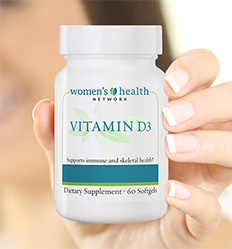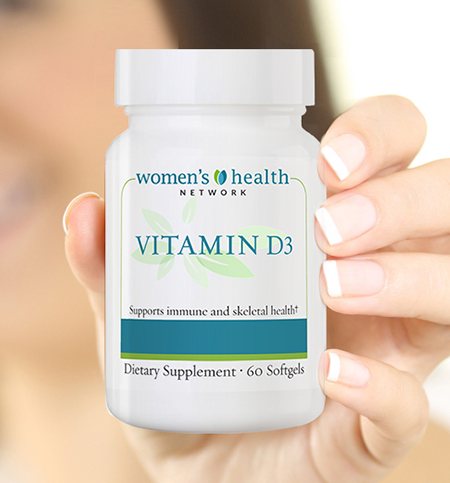By Dr. Susan E. Brown, PhD
You can’t be healthy — or completely happy — without plenty of Vitamin D every day so how are you going to make sure you get enough?

The right amount of Vitamin D helps your body defend against depression, heart disease, stroke, cancer and, of course, osteoporosis. For skeletal health, your level should be no lower than 32 ng/mL, but research suggests you should have a higher Vitamin D blood level of 50 to 60 ng/mL for overall health optimization.
Getting enough Vitamin D is easy but only if you’re proactive about it.
Getting enough Vitamin D is easier than you think. Here’s your 4-step guide:
1. Test your Vitamin D levels right away.
It’s very simple to get your Vitamin D level tested on your own by mail, or you can ask your healthcare provider to do it. Even if you’re getting a lot of sunlight or taking supplements, you can still have low Vitamin D. That’s because each person’s body absorbs and uses Vitamin D differently, and the variation can be dramatic.
As you go through life, your body may become less efficient at making, and using, Vitamin D. Confirming the actual amount of Vitamin D in your blood lets you know if you need to take steps to increase levels of this key nutrient. As a reference, for every additional 1000 IU of Vitamin D you add daily, your Vitamin D level will likely increase by 10 ng/mL.
2. Spend a little time in the sun — but not too much.
Your body uses sun exposure to produce Vitamin D, and this method is still recommended. But only hang out in the sun for about 15-20 minutes daily without sunscreen if you’re light-skinned, and a little longer if you’re darker-skinned. After that, use sunscreen to avoid even a hint of sunburn. Choose products with titanium dioxide and zinc oxide and avoid those with Vitamin A (retinyl palmitate) and oxybenzone.
If you live in a northern area or anywhere far from the Equator, you won’t be able to get a lot of Vitamin D from the sun during the winter months. One way to know: if your shadow is longer than you are, you aren’t getting enough small-spectrum ultraviolet radiation to allow your body to make Vitamin D.
But don’t plan on getting your sun exposure from a tanning bed. Tanning beds can be unsafe because of the characteristics of their ultraviolet rays. Some tanning beds highlight UVA rays over the UVB kind, and these don’t provide the benefits of regular sunshine. Also, remember that excess sun exposure also damages your skin — and worse.
3. Take a Vitamin D supplement every day.
Supplement your Vitamin D intake with the same form of Vitamin D that your skin produces naturally when exposed to the sun: Vitamin D3, or cholecalciferol. Make sure to avoid products with Vitamin D2 because your body cannot use it well.
Supplementing is the best way to ensure you get enough Vitamin D each day — and it’s easy! The pills are small and easy to swallow. Vitamin D supplements are very inexpensive — but you still have to remember to take them every day.
4. Eat a few foods that contain Vitamin D.
It’s hard to get enough Vitamin D from food alone because there aren’t very many options with the amount of Vitamin D most of us need on a daily basis. Some of the foods with higher Vitamin D content are salmon, sardines, Atlantic herring, egg yolks, organ meats and cod liver oil.

Getting enough Vitamin D will make you happy!
After you’ve spent weeks or months actively boosting your Vitamin D intake using these methods, you can test your levels again to see how well your body is absorbing and using this essential vitamin.
If you’ve noticed that being in the sun makes you happy, that mood change might be a result of the surge that sun exposure gives to your Vitamin D production. The brain has a lot of Vitamin D receptors, and having enough Vitamin D may raise levels of serotonin, the “feel-good” chemical in your brain.
Getting plenty of Vitamin D every day is one of the best, and least complicated, ways to improve your health. Get started today.










